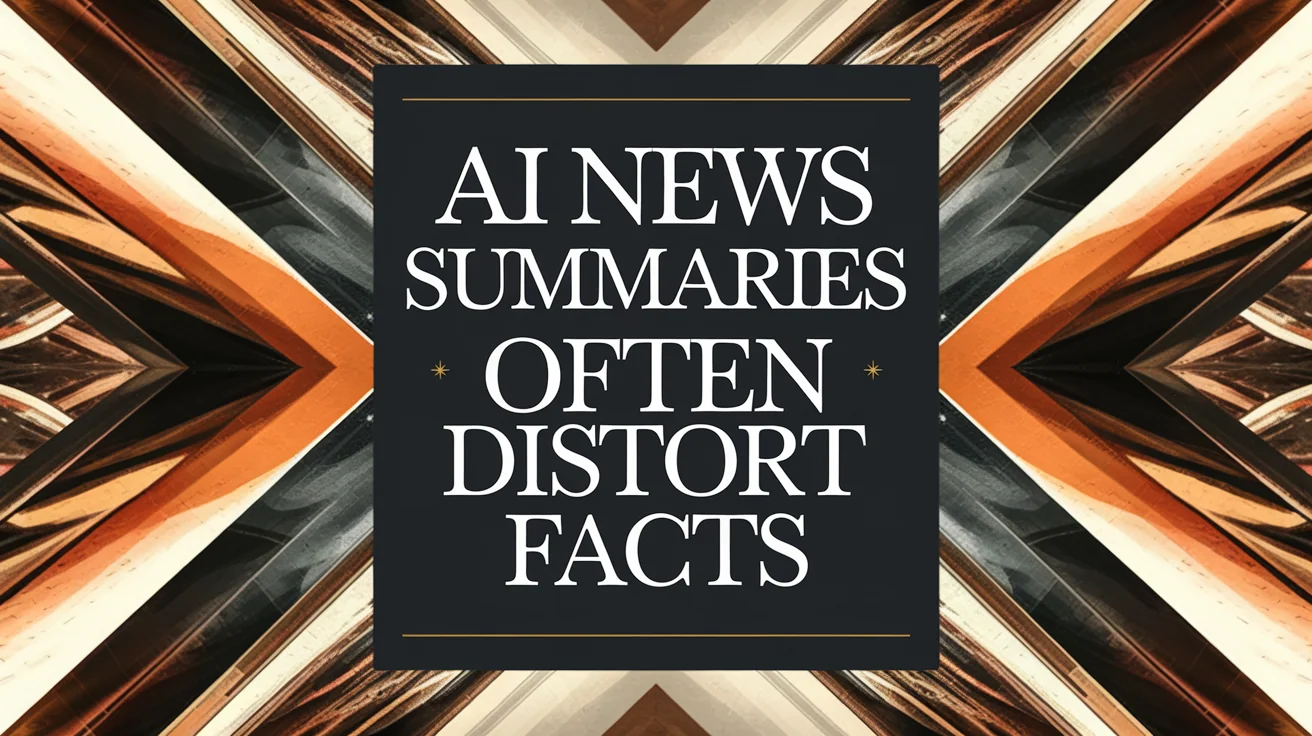AI News Summaries Often Distort Facts

Recent findings from a study by the European Broadcasting Union (EBU) and the BBC shed light on the mishaps associated with AI chatbots in generating news content. This extensive analysis reveals a troubling trend: a significant number of responses from leading AI platforms misrepresent news stories. With 45% of the AI-generated content reviewed revealing serious inaccuracies, the research raises flags regarding the impact of such distortions on public trust and the democratic process.
Scope of the AI Study
The study evaluated responses from prominent AI systems, including ChatGPT, Copilot, Gemini, and Perplexity, spanning 18 countries and 14 languages. Professional journalists examined thousands of responses based on their accuracy, sourcing, and the ability to differentiate between fact and opinion. The findings were striking; approximately 20% of the analyzed responses contained major inaccuracies such as hallucinations, where AIs fabricated information or provided outdated responses. Notably, Google’s Gemini exhibited the poorest performance, with 76% of its outputs deemed problematic.
Impact on Society and Democracy
This worrying trend comes at a time when more users are turning to AI tools instead of traditional methods for news consumption. A report from the Reuters Institute indicated that 7% of individuals globally now use AI for news updates, a figure that climbs to 15% among younger users, specifically those under 25. Despite this growth, an AP poll highlights that three-quarters of U.S. adults do not utilize AI chatbots for news, indicating a lingering skepticism around their reliability.
Consequences of Eroded Trust
The reliance on flawed AI-generated news summaries can have dire social and political ramifications. The EBU and BBC expressed concern over the potential degradation of public trust in news media, asserting that when trust erodes, people’s engagement in democracy could diminish. Jean Philip De Tender, EBU Media Director, emphasized that these inaccuracies are systemic and affect audiences across borders. This underscores the gravity of the issue as it could lead individuals to disengage from both media and civic participation.
The Rise of AI-Generated Content
The issue of distorted news is compounded by the emergence of AI video technologies, such as OpenAI’s Sora, which enable the creation of synthetic content and visual representations. These tools raise additional stakes as video formats have historically been viewed as definitive proofs of reality. However, advancements in AI are blurring these lines as quick-to-create misleading videos can circulate widely without proper scrutiny.
AI Versus Traditional News Consumption
The shift towards AI-generated news reflects a drastic change from traditional news consumption, which previously required substantial time and financial investment. Readers engaged with trustworthy human journalists through newspapers and magazines. The surge in AI facilitates rapid access to condensed news, but as highlighted by the recent research, the accuracy of this content is often questionable. Such a shift necessitates a careful examination of the consequences as society navigates these new digital landscapes.